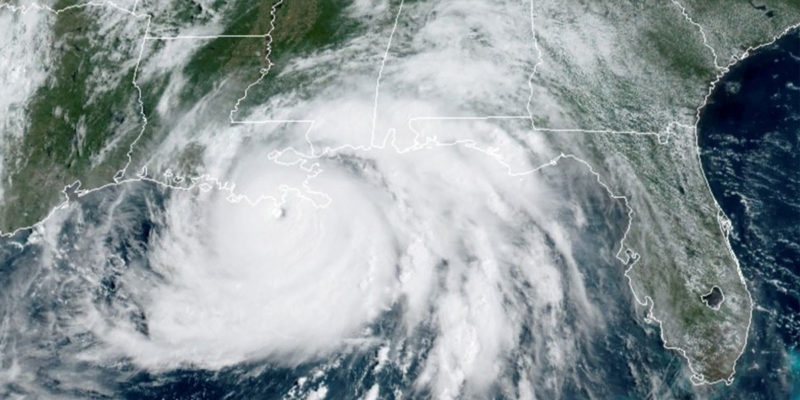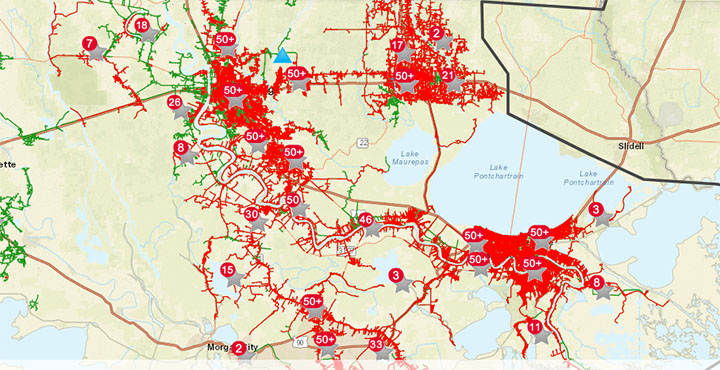It’s early – too early – to make any real judgement about just how bad things are in Louisiana in the aftermath of Ida, which couldn’t have been much worse if it had been designed in a lab where Louisiana was concerned. But what’s true is this was a major, major disaster for Louisiana. And the state is going to take a long time to recover from Ida – if we recover at all.
Here was Louisiana’s governor John Bel Edwards, who to this date has not been particularly effective in getting the southwestern part of the state fully recovered from Hurricane Laura last year, this morning talking about Ida…
For a long time, the true nightmare scenario for a hurricane hitting Louisiana has been that one would come straight up the Mississippi River and therefore lay waste to New Orleans and the rest of southeastern Louisiana. But Ida might actually have proven that assumption wrong.
The storm made landfall yesterday at 11:55 a.m. at Port Fourchon, which is the site of the Louisiana Offshore Oil Port, through which some 20 percent of America’s oil supply flows. Fourchon is heavily fortified against hurricanes, but this storm carried 150 mph winds as a Category 4 hurricane. Its barometric pressure, at 930 mb, was only just more than that of Hurricane Katrina at her worst.
And the winds which hit Port Fourchon were staggering.
Here’s footage from a surveillance camera set up at a fishing camp at Port Fourchon…
Grand Isle, just east of where the storm made landfall, was the scene of a maelstrom for the ages…
As far east as St. Bernard Parish, before the storm even made landfall, there was storm surge flooding.
Next up after landfall was Ida’s impact on Leeville, which is more or less on the “mainland” on the other side of the Hwy 1 bridge from Fourchon and Grand Isle.
https://www.youtube.com/watch?v=4ch_W1IresY
And then came Golden Meadow…
And just inshore from where the storm made landfall, in Houma, it was hell on earth…
Ida came ashore almost 12 hours ahead of schedule, and then it proceeded to slam on the brakes. The storm had been moving toward Louisiana at 16 mph, and it made its way through southeast Louisiana at a snail’s-pace 9 mph.
Here it is taking a roof off a hospital in Galliano, near to the coast…
Here was Raceland, just northeast of Houma…
South of Raceland, this was Lockport…
The storm then turned north, slamming Thibodaux…
…and then unloading on the River Parishes. This was only the beginning in LaPlace…
LaPlace took a reported 12 inches of rain, plus storm surge pushing in from Lake Ponchartrain. The whole town is reportedly underwater and the site of water rescues. And I-10 at LaPlace, just west of the I-10/I-55 junction, is under six feet of water as of this writing.
Ida clobbered St. Charles, St. John the Baptist and St. James Parishes, and then its eye moved north into eastern Ascension Parish, where it claimed the life of a 60-year-old man who was crushed when a downed tree fell through his house onto him.
Advertisement
The storm then traveled north, passing to the east of French Settlement and Port Vincent, laying more or less a direct hit on Killian, Louisiana in southeastern Livingston Parish. Then it made its way slowly north, knocking out power throughout Baton Rouge and the Florida Parishes before heading into Mississippi.
Demco says they’re faced with restoring power to practically all of their 100,000 customers. And here is Entergy’s outage map in southeast Louisiana…
Only a little of the Baton Rouge area survived the storm without losing power. In New Orleans, the power loss is total, because a transmission tower in Avondale, on the west bank of the Mississippi in Jefferson Parish, was knocked into the river – possibly by one of the many barges ripped from their moorings and set free in the Mississippi. That tower held up transmission lines from the Waterford 3 power plant in Hahnville into the city of New Orleans; those lines are now in the river.
The New Orleans area will be out of power for several days, and in lots of cases it’ll be weeks before the power is back on.
Jefferson Parish’s water system has collapsed, because so many trees have been pulled up by their roots that the roots have broken water mains throughout the parish and the system’s integrity as to water pressure has been compromised.
This morning there’s flooding in Braithwaite, which is in Plaquemines Parish…
The French Quarter in New Orleans is trashed…
…and the emergency response system in the city is also compromised.
There are 4,000 National Guardsmen called up, and that’s only the beginning.
We can’t even begin to compare this with some of the other storms that have hit Louisiana. Katrina is the standard most judge hurricane damage by, though Katrina’s actual storm damage was mostly in Mississippi – the worst of Katrina came after it had passed, when a levee failed and flooded New Orleans.
That didn’t happen this time, as it did appear that the upgrades to the levee system made a difference with this storm. But the wind damage and power loss, with some 800,000 households knocked offline, and the storm surge and flooding extensively in the coastal areas and River Parishes, all the way into the Florida Parishes, seems more extensive this time.
It’s going to be a long recovery. It’s going to take a lot of effective leadership. And it isn’t clear that’s in the offing at the local (particularly in Baton Rouge and New Orleans), state or federal level.
Advertisement
Advertisement


